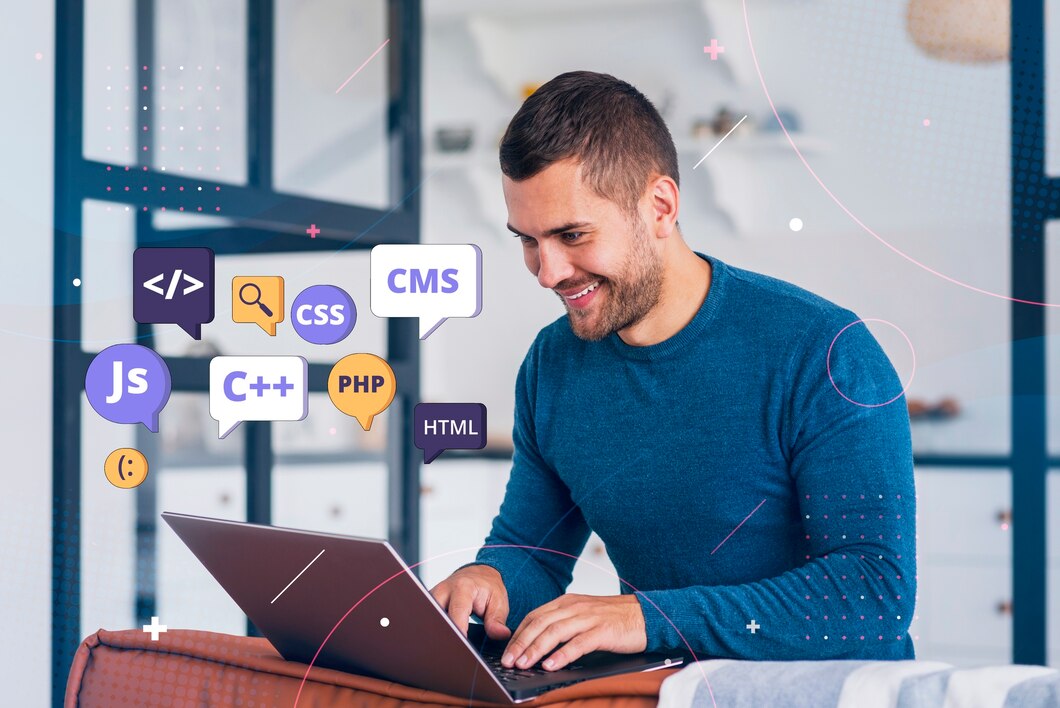The Ultimate Guide to Creating a Successful High-Ticket Coaching Program: A Comprehensive Blueprint for Coaches Ready to Scale
In today’s competitive landscape, high-ticket coaching programs have emerged as one of the most lucrative opportunities for coaches, consultants, and thought leaders. These premium offerings allow you to deliver transformative results while commanding fees that reflect the immense value you provide. However, building a successful high-ticket coaching program isn’t just about slapping a high price tag on your services—it requires strategic planning, deep audience understanding, and relentless execution. In this comprehensive guide, we’ll walk you through every step of creating a high-ticket coaching program that not only attracts premium clients but also delivers exceptional outcomes.
This post is designed to be an exhaustive resource, covering everything from identifying your niche to scaling sustainably. Whether you’re a seasoned coach looking to transition into high-ticket offerings or a newcomer eager to establish yourself as an authority, this guide will equip you with actionable insights and proven strategies. Let’s dive in.
Step 1: Identifying Your Niche and Ideal Client Persona
The foundation of any successful high-ticket coaching program lies in clearly defining your niche and understanding who your ideal client is. Without this clarity, your messaging will lack focus, and your offers may fail to resonate with the right audience .
Why Niche Selection Matters
Choosing a niche allows you to position yourself as an expert in a specific area rather than trying to appeal to everyone. For example, instead of being a generic “life coach,” you could specialize in helping mid-career professionals transition into tech roles or guiding entrepreneurs through scaling their businesses. Specialization not only builds credibility but also enables you to charge higher rates because clients perceive you as uniquely qualified to solve their problems.
Creating Your Ideal Client Persona
Once you’ve identified your niche, the next step is to craft detailed profiles of your ideal clients. Ask yourself:
- What are their demographics (age, gender, income level)?
- What are their primary pain points and goals?
- Where do they spend their time online (social media platforms, forums, etc.)?
- What objections might they have when considering your program?
For instance, if you’re targeting C-suite executives, your persona might include details like age range (40–60), annual income ($250k+), and challenges such as burnout, team management issues, or stagnating growth. Understanding these nuances helps tailor your marketing efforts and ensures your program addresses real needs .
Step 2: Developing a Transformative Framework
A high-ticket coaching program must go beyond surface-level advice—it needs to offer a structured, step-by-step framework that guides clients toward achieving measurable results. This framework serves as the backbone of your program and demonstrates the tangible value participants will receive.
Key Components of a Transformative Framework
- Assessment Phase: Begin by evaluating where each client currently stands. This could involve surveys, interviews, or diagnostic tools to identify strengths, weaknesses, and areas for improvement.
- Actionable Modules: Break down the journey into digestible modules, each focusing on a specific aspect of transformation. For example, a business coach might create modules on leadership skills, financial planning, and team dynamics.
- Implementation Support: Provide resources, templates, and tools to help clients implement what they’ve learned. This could include worksheets, video tutorials, or access to proprietary software.
- Accountability Mechanisms: Incorporate regular check-ins, progress tracking, and milestone celebrations to keep clients motivated and accountable.
By structuring your program around a clear framework, you ensure consistency across all client interactions while delivering predictable results .
Step 3: Designing Your High-Ticket Offer
With your niche and framework in place, it’s time to design an irresistible offer that commands premium pricing. High-ticket buyers expect exclusivity, personalization, and unparalleled support—your program should reflect these expectations.
Elements of a High-Ticket Coaching Program
- Personalized Attention: Offer one-on-one sessions tailored to individual needs. This personalized approach justifies the higher price point and fosters deeper connections with clients.
- Group Dynamics: While individual attention is crucial, incorporating group components can enhance learning and accountability. Consider hosting monthly mastermind sessions or peer-to-peer networking opportunities.
- Bonuses and Upsells: Sweeten the deal with exclusive bonuses, such as eBooks, webinars, or VIP events. These add-ons increase perceived value and encourage commitment.
- Long-Term Access: Grant lifetime access to course materials, private communities, or ongoing support. This ensures clients feel invested in your program long after the initial engagement ends .
Step 4: Setting an Effective Pricing Model
Pricing your high-ticket coaching program appropriately is critical for attracting premium clients and ensuring profitability. Many coaches struggle with setting prices because they fear rejection or undervalue their expertise. Here’s how to overcome those doubts:
Strategies for Pricing Success
- Research Competitors: Study other coaches in your niche to gauge typical pricing ranges. Aim to position yourself slightly above average to convey exclusivity.
- Focus on ROI: Highlight the return on investment (ROI) clients can expect. For example, if your program helps entrepreneurs scale their businesses by $100,000 annually, charging $10,000 feels reasonable.
- Test Different Tiers: Experiment with multiple pricing tiers (e.g., bronze, silver, gold packages) to cater to varying budgets and preferences.
- Use Scarcity and Urgency: Limit enrollment or offer early-bird discounts to create a sense of urgency and drive faster decision-making .
Remember, your price communicates value. If you underprice, potential clients may question the quality of your program .
Step 5: Creating Magnetic Content to Attract Clients
Content marketing plays a pivotal role in building trust and generating leads for your high-ticket coaching program. By publishing valuable, engaging content, you attract prospects organically and establish yourself as an authority in your niche.
Types of Content to Leverage
- Blog Posts: Write in-depth articles addressing common pain points and solutions within your niche. Use headings, bullet points, and visuals to make your posts scannable and engaging .
- Videos: Create explainer videos, testimonials, or behind-the-scenes footage showcasing your expertise and personality.
- Podcasts: Launch a podcast series featuring interviews with industry experts or sharing actionable tips.
- Social Media: Post consistently on platforms where your audience spends time. Share snippets of your content, client success stories, and motivational quotes to stay top-of-mind .
Consistency is key. Aim to publish at least once per week to maintain momentum and build a loyal following .
Step 6: Building a High-Converting Sales Funnel
A well-designed sales funnel automates and streamlines the process of converting leads into paying clients. Given the significant investment involved in high-ticket programs, prospects typically require multiple touchpoints before committing.
Stages of a High-Converting Funnel
- Lead Magnet: Offer a free resource (e.g., eBook, webinar, or consultation) to capture email addresses and initiate the relationship.
- Nurture Sequence: Send targeted emails highlighting the benefits of your program, sharing testimonials, and addressing objections.
- Consultation Call: Invite qualified leads to a discovery call to discuss their goals and demonstrate how your program can help them achieve success.
- Final Pitch: Present your offer during the call or via a follow-up email, emphasizing urgency and scarcity to prompt immediate action .
Tools like HubSpot, ClickFunnels, or Earndos Analytics can simplify funnel creation and optimization .
Step 7: Leveraging Automation and Delegation for Scalability
As your coaching business grows, manual processes become unsustainable. Automating repetitive tasks and delegating responsibilities frees up time for high-value activities like strategy development and client interaction.
Tips for Scaling Efficiently
- Automate Email Campaigns: Use platforms like Mailchimp or ConvertKit to schedule and send automated emails based on user behavior.
- Outsource Administrative Tasks: Hire virtual assistants to handle scheduling, data entry, or customer support.
- Hire Additional Coaches: As demand increases, consider bringing on junior coaches or mentors to assist with client delivery.
- Monitor Performance Metrics: Regularly review analytics to identify bottlenecks and opportunities for improvement .
Scaling strategically ensures consistent quality and maximizes profitability .
Final Thoughts: Turning Vision Into Reality
Building a successful high-ticket coaching program is a journey marked by continuous learning and adaptation. By following the steps outlined in this guide—from identifying your niche and crafting a transformative framework to designing an irresistible offer and scaling sustainably—you position yourself for long-term success.
Remember, the key to thriving in the high-ticket space lies in delivering unmatched value and maintaining operational excellence. Embrace the power of data-driven decision-making, stay adaptable, and watch your vision unfold into a thriving reality.
Are you ready to take the leap? Start implementing these strategies today, and watch your coaching empire grow exponentially .




















PIAVGOXo ASv tBbVsxcX